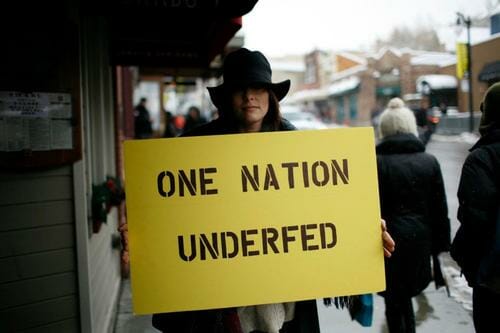A Place at the Table

Years ago, a friend of mine who immigrated from Iraq told me that one of the biggest shocks in arriving wasn’t how people behaved, but the overabundance of choices, in of all places, a supermarket. The fact that she would be nearly paralyzed by the amount of choices made me appreciate the “super” in supermarket. The dark side to all those choices and why a nation should be ashamed is featured in the poverty documentary A Place at the Table.
Directed by Lori Silverbush and Kristi Jacobson, A Place at the Table opens brilliantly, quickly tackling possible stereotypes by featuring Rosie, a white fifth grader in Colorado who has to depend on charity from friends and neighbors to have enough to eat. Not only does she have to deal with a growling tummy, but she has to deal with failing grades caused by that growling tummy. Her teacher, herself a part of the hunger cycle in the past, tries to help and has some success. The problem is we learn there’s millions of Rosies out there. How many? Try 1 in 4 American children.
It turns out that hunger in the U.S. doesn’t stop with children, although they are a significant part of the nearly 50 million who are undernourished or don’t know where their next meal comes from. The film goes on to show that even in the land of plenty, hunger manages to cross geographical, racial and generational boundaries. Highlighting best this broken step in the American dream is Barbie, a single mother of two in Philadelphia. She not only has to deal with the pain of knowing that she can barely feed her kids, but when she can that it’s more often than not junk food or the next best thing. The “two steps forward, one step back” is in full force as the newly employed Barbie finds herself struggling even more.
-

-

-

-

-

-

-

-

-

-

-

-

-

-

-

-

-

-

-

-

-

-

-

-

-

-

-

-

-

-

-

-

-

-

-

-

-

-

-

-








































